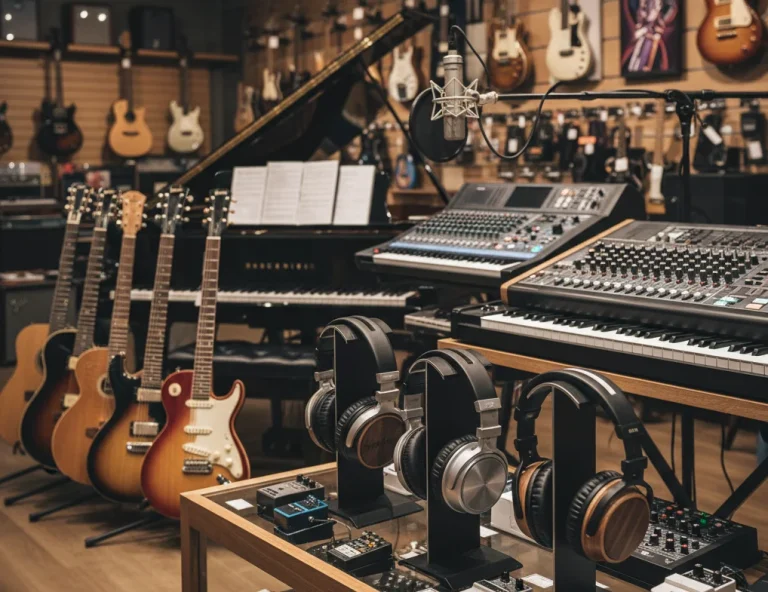All Topics
- Alchemizing Music Concepts for Students
- Artist Spotlight
- artium gift card
- Artium Maestros
- Artium News
- buying guide
- Carnatic Music
- Devotional Music
- Editorials by Ananth Vaidyanathan
- Film Music
- Guitar
- Hindustani Classical Music
- Indian Classical Music
- Indian Folk Music
- Insights
- Instruments
- Karaoke Singing
- Keyboard
- Kids Music
- maestros
- Music Education
- Music for Kids
- Music Industry
- Music Instruments
- Music Legends
- Music Theory
- Music Therapy
- Piano
- piano guide
- Success Stories
- Tamil Film Music
- Telugu Film Music
- Time Theory
- Tools
- Uncategorized
- Vocal Singing
- Vocals
- western classical music
- western music
- Western vocal music
How to Play the G Major Scale on Piano?
How to Play the G Major Scale on Piano?

Table of Contents
The G Major scale is one of the most important parts of music education and is a favourite to be played by musicians across genres. The tone is uplifting and calming and musicians find the scale enjoyable to play and it is considered a vital tool for developing needed musical skills. There are many ways the G Major scale is important to music, such as how it is a foundation for piano skills, how versatile it is, and more. However, before we jump into that, let us understand what the G Major scale is and how it should be played.
But before that…
If you’re really excited to start your journey in music, start with a free trial lesson today!
Understanding the G Major Scale
The G Major scale on piano is a sequence of eight notes that are arranged in a specific order. This creates an atmosphere of a bright and cheery sound. The G Major piano notes are: G – A – B – C – D – E – F# – G. From this, six of these are white keys, one is a black key and a note that is repeated. This note is also what we start with but either higher or lower. The single sharp (F#) gives itself a unique character while keeping the scale approachable for beginners.
The scale starts on the G (root note) and ends on G, again but one octave higher. Each note has a specific role that contributes to its harmonic and melodic qualities. Take the seventh note – F#. Playing creates a sense of tension that resolves back to the note – G.
The G Major scale follows the major scale formula, which is a series of whole steps (W) and half steps (H). Half steps and whole steps are the building blocks of musical scales. They describe the distance, or interval, between two notes. The pattern for the G Major scale is as follows.
- G → A: Whole step
- A → B: Whole step
- B → C: Half step
- C → D: Whole step
- D → E: Whole step
- E → F#: Whole step
- F# → G: Half step
Here, F# is used instead of normal F to ensure that the formula is maintained, giving the scale its unique character. By understanding the structure and relationships within the G Major Scale, musicians can apply this knowledge to other scales and build a strong foundation in music theory.
Finger Positions for the G Major Scale
Mastering the G Major scale on piano requires proper finger placement. It can be hard to master at first so to help you out, here is a handy little guide.
In an ascending scale, you place the fingers on your right hand like this:
- Thumb (1) on G
- Index Finger (2) on A
- Middle Finger (3) on B
- Tuck your thumb (1) under to play C
- Index Finger (2) on D
- Middle Finger (3) on E
- Ring Finger (4) on F#
- Pinky (5) on G
You can reverse the playing process as well:
- Pinky (5) on G.
- Ring finger (4) on F#.
- Middle finger (3) on E.
- Index finger (2) on D.
- Thumb (1) on C.
- Cross middle finger (3) over to play B.
- Index finger (2) on A.
- Thumb (1) on G.
Worry not, the G Major can feel complicated to play at first but practising slowly and consistently can help ensure proper coordination between your hands. Being relaxed while performing finger crossings will help you make sure that it is performed smoothly and correctly.
Expand Your Skill Set Through Different Octaves
A great way to expand and improve your skills is to play the G Major scale on different octaves. It will help you develop a better level of coordination, broaden your playing range and improve your confidence with the keyboard.
Playing across various octaves can improve your hand-eye coordination, helping you play the right notes at the right time and smoothly, especially during finger crossings. This will lead you to be more comfortable with a keyboard. With continuous practice, your hands and fingers will get accustomed to the different placements for notes. With different octaves, your notes will sound more even, allowing you to maintain a steady tone and tempo as you play.
With all these advantages, you must first learn how to practise. While taking online piano classes, you will come to understand that practising is your greatest move to fully master the scale. So, start slowly. Take your time to understand the scale, the notes and their positioning. You will need to do as such so that you can perform smooth finger transitions. They are a vital aspect of playing the G Major scale on piano.
To help you stay on tempo, you could use a metronome. Playing alongside the beats can help you improve your timing and also make sure that you keep a consistent volume across different octaves. Last but not least, you should understand how to play the scale, both ascending and descending. Playing the scale without stopping while smoothly transitioning between octaves will be helpful.
Enhance Your Playing Experience with Musical Contexts
From various piano notes for beginners, learning those for the G Major scale is important as it serves as the base for many pieces of music. By using the notes, you can create rich and powerful melodies.
Hence, as you play the G Major scale on the piano, you can learn to implement it into different compositions. The notes of the G Major scale naturally create pleasing and cohesive melodies. Begin with a simple piece and slowly add in difficulty to test yourself. As you slowly come to understand the G Major piano notes, you can start to improvise and create your melodies. Start with simple and easy patterns. Take your time mastering them, after that, you can move on to adding more complexities of your liking. As you practise and improve, you will begin to feel comfortable with the scale. From then on, you could try to break away from the norm and come up with something of your own.
Practice Tips for The G Major Scale on Piano
As you practice alongside your online piano classes, it’s always better to have some tips and tricks in your mind. Here, take a look:
- Using a metronome for timing can help you maintain your timing and make sure that you stick to the beat and improve your accuracy.
- Take your time. Rushing while practising and learning will not help, rather it will delay your progress even more. The G Major piano notes can get complicated to follow, so take it slow and steady.
- Along with taking your time, try learning in bits. Break it up into smaller sections to make it easier to follow and master. It will be helpful, especially when you’re transitioning between octaves.
- As you get accustomed to the scale, you could start adding in a few variations to increase the challenge. Introducing variety prevents boredom and deepens your understanding of the scale.
- Finally, keep practising. Take the time out to learn and understand the scales, and the notes. Consistency is key to mastering any skill.
Common Mistakes To Avoid
It goes without saying that as you go through online piano classes, mistakes occur. However, don’t let that hold you back. It is a part of the learning process, where you will slowly improve and understand the intricacies of the piano. Well, how about we, at Artium Academy, help you avoid some of those mistakes?
- One of the most common mistakes is incorrect finger placement. Using the wrong fingers or inconsistent fingerings can lead to awkward hand movements and make playing feel clumsy. To avoid such problems, use the recommended placement for the G Major scale.
- Uneven tempo or rhythm is the next common issue. As you learn the G Major scale on piano, you will soon understand that staying on the beat is a must. However, that is easier said than done. Try clapping to understand the beats or use a metronome to play alongside the ticks.
- Playing any instrument can cause some sort of strain on your body. In the case of pianos, it can cause stiffening and fatigue in your fingers. Beginners often tense up, especially during finger crossings, so to avoid that, try to keep your hands and wrists relaxed while playing. Shake out your hands between repetitions if they feel stiff.
Conclusion
The G Major scale on piano is an incredible yet vital stepping stone in your musical journey. By mastering this scale, you’re building a foundation for fluency across the keyboard, unlocking the ability to create melodies, harmonies, and improvisations that resonate with others. It can serve as your gateway into more complex rhythms and melodies that sound impeccable. The G Major scale can be complicated to understand so it is natural for you to make mistakes but don’t be afraid to keep trying. You also do not have to do this alone. The teachers here, at Artium Academy are ready to help guide you on your piano learning journey.






